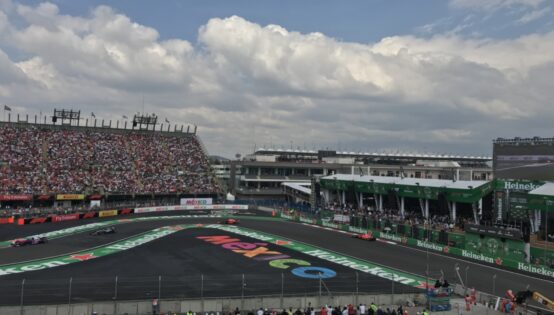Pit stops in NASCAR are a finely tuned ballet of speed and precision, but the rules and procedures behind them have evolved markedly over time. In the early years, teams used bumper jacks or basic floor jacks and manual lug wrench methods, with no pit road speed limits and minimal safety gear; stops could take a minute or more. Over the subsequent decades, innovations such as pneumatic air guns, capless fuel nozzles, standardized jacks, and the introduction of pit-road speed limits in 1990 for crew safety transformed stops into 15-second operations.
Crew sizes were reduced (from as many as seven over-the-wall members to five), safety equipment became mandatory, and rules around fueling, electronic data connections, and stage pit procedures further refined timing and choreography. Today, understanding these evolutions helps explain why any adjustment, such as those for a road-course race in Mexico, demands fresh rehearsal and strategic tweaks behind the wall.
Heading into the Viva México 250 at Autódromo Hermanos Rodríguez for the Cup Series’ first international points-paying race since 1958, NASCAR and teams have prepared for the unique demands of this road course. While the fundamental pit stop rules remain consistent, entry speed limits, over-the-wall timing, and repair clocks, the choreography must adapt to the pit road layout and car orientation specific to Mexico City.
NASCAR officials have noted that “for pit road rules or changing tires, nothing is different. It’s like a normal race,” but the geometry of pit boxes and approach angles can vary significantly from standard ovals, prompting teams to tweak their routines. The core change lies in how cars face in the pit box on a road-course layout versus an oval.
As IMSA Crew member and expert Bozi Tatarevic explained, “The cars are flipped now, there are options for teams to go a couple of different ways, if you want to keep the same motions, you want to swap your front tire changer and rear tire changer. So they’ll be in the same position.” This highlights that, rather than reinventing entirely new roles, many teams opt to preserve crew member positions relative to the car by swapping changers, maintaining muscle memory even though the car’s orientation is reversed.
Pit stops will be very different at Mexico for NASCAR pit crews.
I get into the details and more on the latest episode of The Bozi Breakdown:
YouTube: https://t.co/GMyFgXJAvD
Apple: https://t.co/XhZOYiVZ5I
Spotify: https://t.co/fmHAQK737Y pic.twitter.com/76BsvL5gIF
— Bozi Tatarevic (@BoziTatarevic) June 12, 2025
Moreover, Tatarevic noted, “Typically, if you’re standing on that wall, the car will be facing to your left, the fueler will be on your far right, but at these types of road courses, the car is facing to your right, and the fueler will be on your far left. So what that means is you have to figure out how to tweak your choreography, we’ll likely see some stuff that’s maybe even slightly different than what we saw last year.” By pointing out the fueler’s relocated position and the need to rehearse adjusted entries, this insight underscores why teams run pit-road simulations: small orientation changes can affect handoffs, sightlines, and timing, so crews must practice these flips in advance to avoid costly fumbling on race day, and we’ve seen how pivotal pit stops can be.
Effective pit stops often decide races. For example, at Michigan International Speedway in June 2025, Denny Hamlin nearly lost his victory due to a premature pit departure that could have drawn a penalty. A reflexive save by tire carrier Dylan Dowell prevented dragging the fuel can out of the box, allowing Hamlin to secure the win. That incident underscores how split-second actions by crew members can swing outcomes. NASCAR teams invest heavily in pit crew training because race pace differences are often marginal; clean, penalty-free stops translate directly into track position and, ultimately, race results.
Pit crew performance trends and who to watch in NASCAR Mexico
So far in the 2025 NASCAR Cup season, pit crew efficiency has shown clear leaders, and those trends matter heading into Mexico. NASCAR Insights reports that through mid-season, the average fastest four-tire pit stop across all races has hovered around 9.58 seconds, slightly quicker than the 2024 pace (9.77 s). That small margin reflects how even a few tenths saved or lost on pit road can shuffle track position. As teams prepare for the unique pit-road layout at Autódromo Hermanos Rodríguez, understanding which crews deliver consistent, clean stops and minimize penalties can indicate who is best positioned to capitalize under the new conditions.
According to NASCAR Insights’ Top Five Pit Crews by average four-tire stop time in 2025, the standout crews include 23XI Racing’s No. 23 for Bubba Wallace, Joe Gibbs Racing’s No. 54 for Ty Gibbs, Joe Gibbs Racing’s No. 11 for Denny Hamlin, RFK Racing’s No. 17 for Chris Buescher, and Hendrick Motorsports’ No. 5 for Kyle Larson. Notably, Larson’s crew was swapped with that of Spire Motorsports’ Justin Haley after around 7 races in the season.
These crews combine speed with low penalty rates, key when pit boxes may require slightly different entry angles or mirror adjustments on a road course. The No. 11 crew’s ability to save a near-penalty at Michigan exemplifies how quick, precise actions under pressure can preserve a win; similar vigilance will be critical in Mexico’s tighter pit stalls.
Looking ahead to the Viva México 250, watch how these top crews adapt their rehearsed routines to the Mexico City pit-road geometry. Even the fastest NASCAR crew can lose time if the car’s orientation shifts the handoff patterns or sightlines. Teams that have demonstrated both top-end speed and clean execution this season, especially those in the Top Five list, are most likely to navigate the new layout without missteps.
Who do you think will come out on top in NASCAR’s Mexico visit? Let us know in the comments!
The post What Has Changed in NASCAR Pit Stops for the Mexico Race? How Is It Different? Everything You Need to Know appeared first on EssentiallySports.
